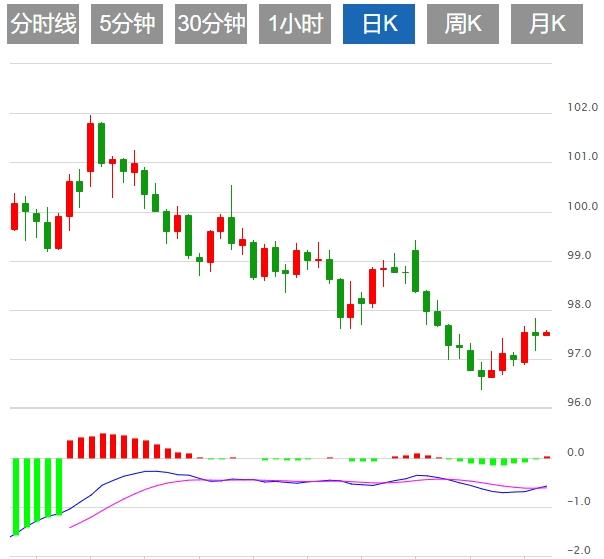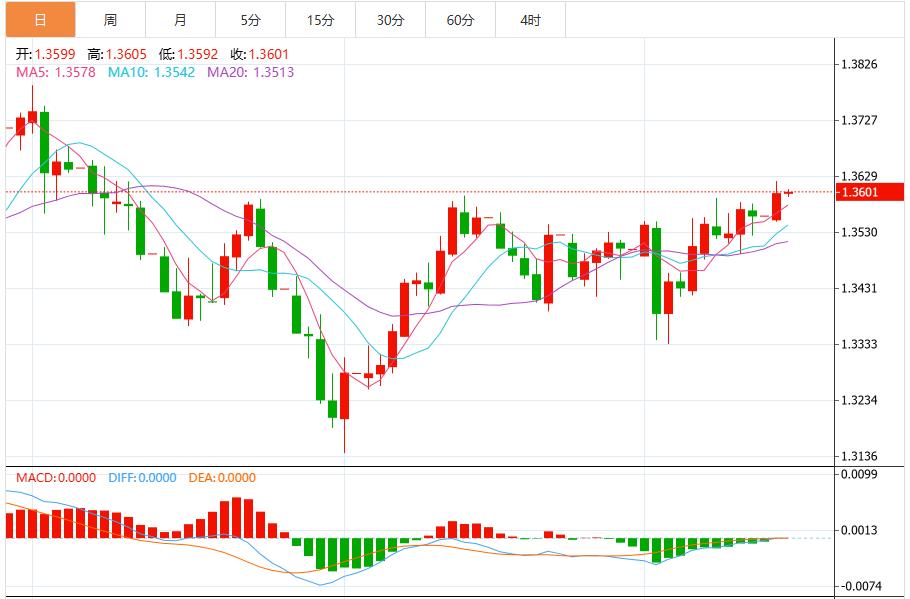Wonderful introduction:
Spring flowers will bloom! If you have ever experienced winter, then you will have spring! If you have dreams, then spring will definitely not be far away; if you are giving, then one day you will have flowers blooming in the garden.
Hello everyone, today XM Foreign Exchange will bring you "[XM Foreign Exchange]: The Federal Reserve cut interest rates as expected, and the US dollar index fluctuates downward and falls below the 97 mark." Hope it will be helpful to you! The original content is as follows:
After the Asian session on Thursday, the US dollar index fluctuated downward, and the Federal Reserve lowered interest rates by one quarter percentage point, the dollar against the euro fell to a four-year low, and then reversed its decline and rose in trading on the day. The rate cut, and the forecast that the two remaining policy meetings of the year, are expected to cut interest rates by one quarter of each point in the remaining two policy meetings this year, suggests that Fed officials have begun to downplay the risk of continued inflation in government trade policies. Investors need to pay attention to the market's further interpretation of the Federal Reserve's interest rate resolution, the changes in the Bank of England's interest rate resolution and the number of initial unemployment claims in the United States, and the press conference held by US President Trump after meeting with British Prime Minister Stamer.
U.S. dollar: As of press time, the US dollar index hovers around 96.97. The intersection of technology and fundamentals has made the support range of the US dollar 96.9500-97.0724 the focus of the current focus. If the price stabilizes here, the rebound may test the middle track; but if it is lost, the downside space will be further opened, and the expansion of the debt-to-exchange gap will become a catalyst. www.qgrse.cnpared with the historical market, such as the tragic decline of the US dollar in the first half of the year, the current adjustment is more timely, due to the clear shift in the Fed's path.



Anxiety within the Republican Party about Trump's trade policy emerged publicly in the House of Representatives this week. A small number of lawmakers tried to fight back against the president's iconic foreign economic strategy and demanded a greater voice in tariff formulation. Although the objection did not last long, it revealed the cracks in the party's internal tariff issues, and its economic impact could become the core issue of next year's midterm elections. Although legallyCongress has the power to set tariffs, but Trump has unilaterally imposed tariffs on dozens of trading partners in recent years by using emergency authorizations, and the Republican leadership in the House of Representatives obedience to Trump's words makes it harder for the opposition to launch a vote challenge on tariffs. House Speaker Mike Johnson quickly calmed protests from a handful of Republican lawmakers on Tuesday, postponing the head-on confrontation over Trump's tariff legitimacy until at least the end of January next year. Voting may follow the holiday consumption season, when consumers' attitudes to tariffs may become a key reference for lawmakers.
Feder Chairman Powell answered a question on Wednesday about the central bank's statutory requirement of "moderate long-term interest rates" at a press conference after the interest rate resolution, explaining why the three missions conferred by Congress to the Federal Reserve can be attributed to two major tasks in actual operations. Central bank officials have long positioned their mission at a dual task, namely, that monetary policy focuses on keeping inflation low and stable and ensuring that the job market continues to be strong, with basically not much emphasis on the third task. Powell told reporters that the third mission is real, but in the eyes of central bankers, it is a derivative of two more well-known goals set by the law. "We believe that moderate long-term interest rates are the result of achieving low and stable inflation and employment maximization," he said. For some time, Fed officials did not believe that the third task required "independent action."
As the rising unemployment rate and global uncertainty suppressed demand, New Zealand's economic contraction far exceeded economists' expectations. Data released on Thursday showed that the country's first-quarter GDP grew by 0.9% after a revised increase, but fell 0.9% in the three months to June, after economists expected a 0.3% contraction. The New Zealand economy, which experienced a severe recession last year, responded to the central bank's sharp rate cuts. The cooling of demand is expected to ease inflationary pressures, giving the New Zealand Fed a chance to further cut interest rates by the end of this year.
Mitsubishi UF's US macro strategy director George Goncalves said that the Fed's decision was the most dovish statement the Fed has made, andThey added another rate cut this year in the dot chart expectations. However, it feels like the Fed has not entered the sprint mode of rate cuts, they have just restarted the rate cuts because they admit that the job market is not as good as they expected. This is also the reason why risky assets respond in a dull manner. The Fed may drop by 25 basis points in October and December, while a 50 basis point cut is not necessarily positive for credit.
Sandra Horsfield, an analyst at InvestecEconomics, said in a report that the overall inflation rate in the UK remained at a high of 3.8%, which increased the likelihood of the Bank of England to keep interest rates unchanged for the remainder of 2025. Currently, the UK inflation rate is still far higher than the 2% target set by the Bank of England. Horsfield said: "Only evidence of a decline in inflation can convince most members of the Monetary Policy www.qgrse.cnmittee that further rate cuts are appropriate." Data from the London Stock Exchange Group shows that the market believes that the Bank of England will cut interest rates again by the end of 2025 is 40%.
The above content is all about "[XM Forex]: The Federal Reserve cut interest rates as expected, and the US dollar index fluctuates and falls below the 97 mark". It is carefully www.qgrse.cnpiled and edited by the editor of XM Forex. I hope it will be helpful to your trading! Thanks for the support!
Due to the author's limited ability and time constraints, some content in the article still needs to be discussed and studied in depth. Therefore, in the future, the author will conduct extended research and discussion on the following issues: